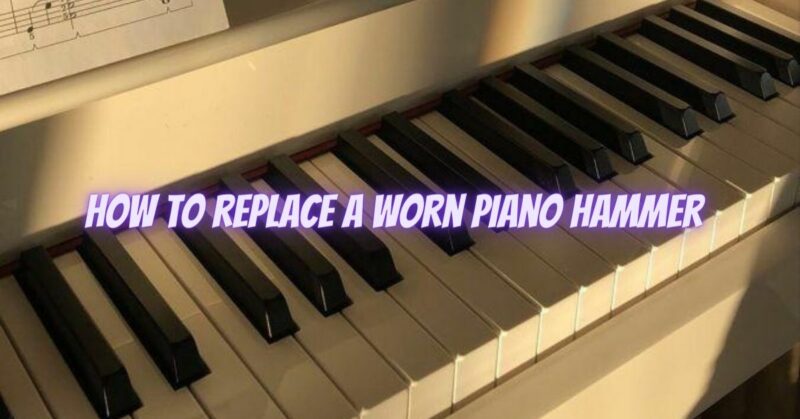Over time, piano hammers can become worn due to regular use and exposure to environmental conditions. A worn-out hammer can affect the piano’s tone, responsiveness, and overall playability. When a hammer shows significant signs of wear, it’s essential to replace it to maintain the instrument’s sound quality. While piano hammer replacement is a delicate task that requires expertise, here’s a step-by-step guide to help you understand the process:
Note: Replacing piano hammers is a complex procedure that is best performed by a qualified piano technician. If you are not experienced in piano repair, it’s highly recommended to seek professional assistance.
Step 1: Assessment
- Examine the worn hammer: Carefully inspect the hammer to confirm that it is indeed worn and requires replacement. Look for signs such as grooves, indentations, and loss of felt density.
Step 2: Procurement
- Obtain a replacement hammer: Contact a reputable piano parts supplier or manufacturer to obtain a suitable replacement hammer. Ensure that the new hammer matches the specifications of the original hammer, including size, shape, and felt material.
Step 3: Prepare the Piano
- Remove the action: The piano action, which consists of the hammers, keys, and other moving parts, needs to be removed from the piano for hammer replacement. This process involves detaching various connecting components.
Step 4: Remove the Old Hammer
- Remove the worn hammer: Carefully remove the old hammer from the action. This may require loosening screws and carefully disconnecting the hammer from the hammer shank.
Step 5: Install the New Hammer
- Place the new hammer: Carefully position the new hammer in place, making sure it aligns correctly with the hammer shank and the strings. Attach it securely using screws or other fasteners.
Step 6: Regulation
- Regulate the hammer: After installing the new hammer, the piano technician must regulate it to ensure proper alignment, spacing, and height relative to the other hammers. Regulation ensures a uniform and even response from all the hammers.
Step 7: Voicing
- Voice the new hammer: Voicing involves adjusting the new hammer’s felt density and shape to match the surrounding hammers. The technician uses specialized tools to create a consistent tone across all the hammers.
Step 8: Test and Fine-Tune
- Reassemble the action: After replacing and regulating the hammer, reassemble the piano action and attach it back to the piano.
- Test the piano: Play the piano and listen carefully to ensure that the new hammer produces the desired tone and responsiveness.
Step 9: Fine-tuning
- Make fine adjustments: If necessary, the technician may make further adjustments to achieve the best possible sound and performance.
Step 10: Final Inspection
- Inspect the piano: Conduct a final inspection to ensure that all components are functioning correctly and that the piano’s action is well-regulated.
Conclusion:
Replacing a worn piano hammer is a complex and delicate process that requires specialized knowledge and skills. It is essential to entrust this task to a qualified piano technician to ensure that the replacement is done correctly and the piano’s original tone and playability are preserved. Regular maintenance and professional care will help extend the life of your piano’s hammers and keep the instrument in optimal condition for years to come.


